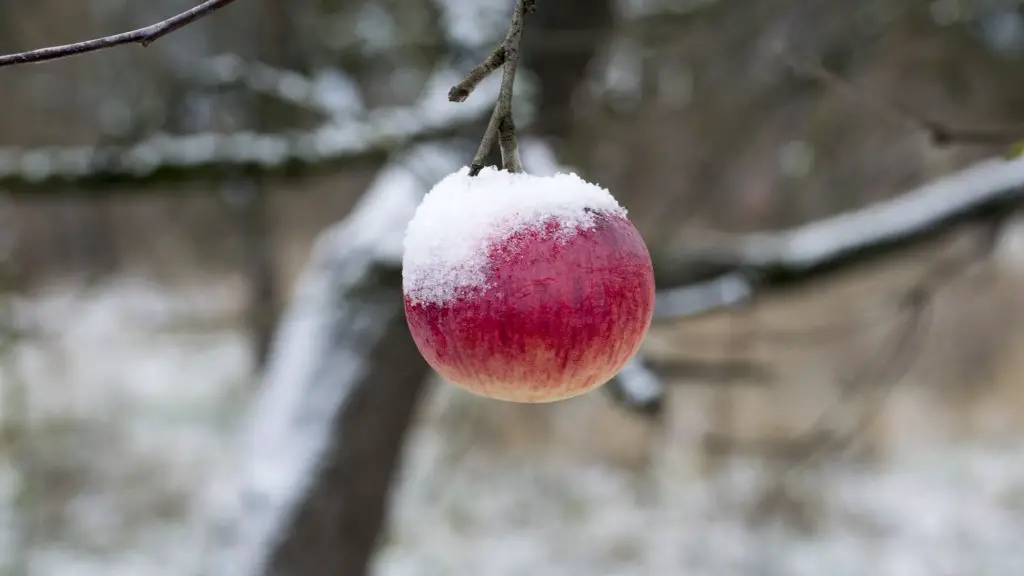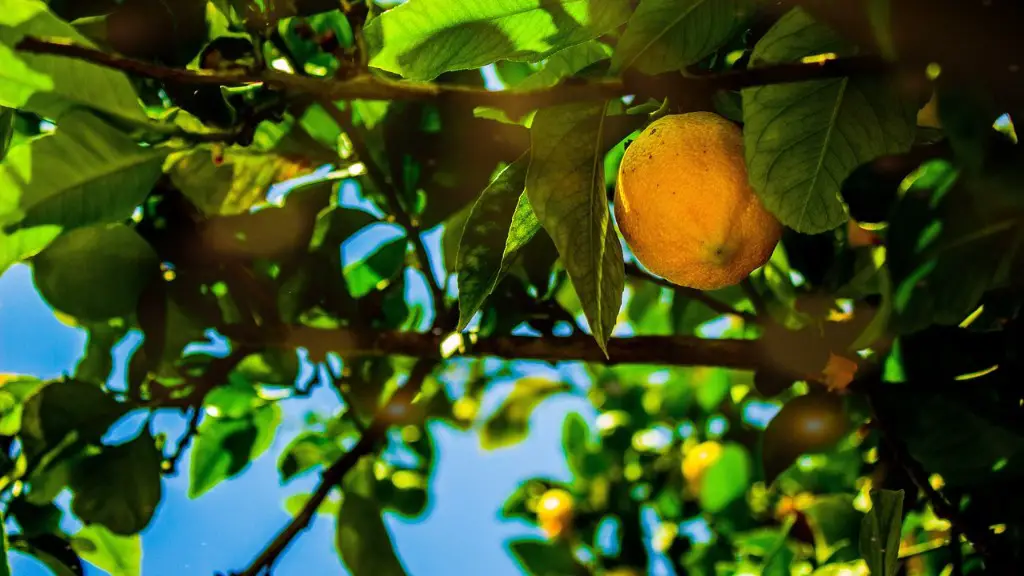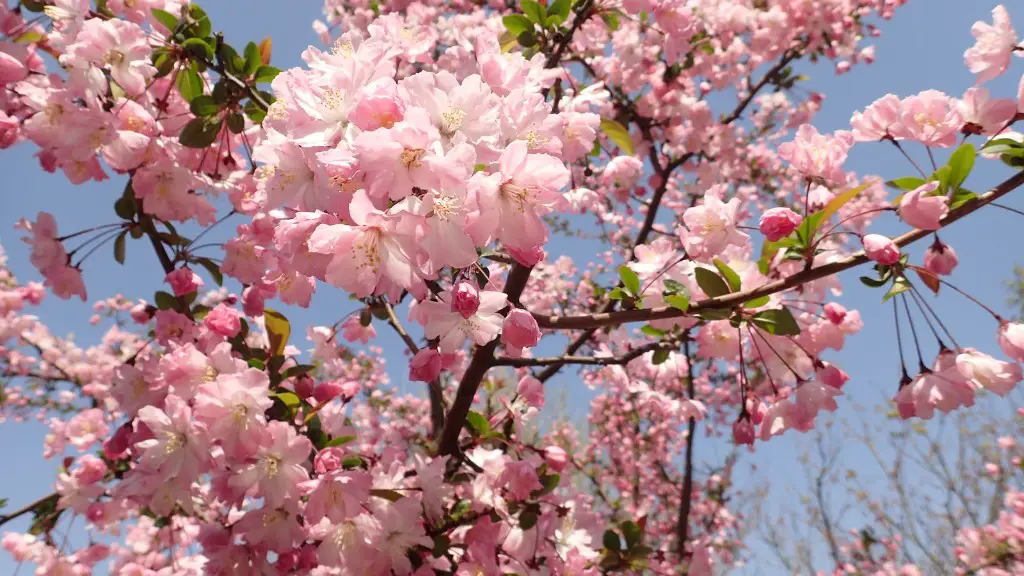Granny Smith apple trees require pruning each season to promote healthy growth and help the tree yield more apples. In this article I’ll explain the basics of how to prune a Granny Smith apple tree.
Pruning should start when the tree is young, and continue seasonally for the next few years. The best times for pruning are late winter or early spring, when the tree is dormant.
Before you start pruning, inspect the tree. Look for any dead, damaged, or diseased branches that need to be removed and discard them in a compost pile. Also look for any crossing branches, which will need to be cut to allow light and air to reach the center of the tree.
When you’re ready to prune, use sharp, clean pruning shears. Start by removing any branches that are growing downwards or are too close to the center of the tree. You should also cut away any branches that grow too low and reach the ground. These low branches may be the first place pests and diseases attack the tree.
Next, identify the scaffold branches (the main branches that support the tree). Cut away any suckers that are growing at the base of the tree and make sure the scaffold branches remain evenly spaced. Also, look for any shoots coming from the main branches and cut them away.
Finally, cut away any lateral branches growing from the main branches. Cut them back to the buds nearest to the main stem, being careful not to damage the buds. This will help the tree grow in a healthy, strong shape.
Once your Granny Smith apple tree is pruned, the main thing to do is watch the tree carefully and continue pruning as needed.
Continue Pruning
Pruning is an ongoing process that requires attention throughout the year. As the tree grows, you’ll need to prune off excess branches, or branches that are growing too close to each other.
Every autumn, inspect the tree again and remove any dead, damaged, or diseased branches. This is important, as it will help prevent the spread of diseases to the healthy parts of the tree.
During the winter months, pay attention to the tree’s shape. Prune away any branches that look out of place, or that could potentially become diseased.
Before spring arrives, prune away any weak, spindly, or crowded branches. This will help to keep the tree healthy and productive.
Also keep an eye out for “water sprouts”, which are new shoots that appear at the base of the tree. These shoots are not productive, and should be removed.
By pruning regularly and carefully, your Granny Smith apple tree will remain healthy and productive throughout the year.
Choose Your Trees Carefully
When selecting a Granny Smith apple tree, it’s important to choose the right variety. Different varieties of apples have different growth habits, so choose a variety that is suitable for your climate and garden.
Before you buy a tree, do your research. Look for a variety that produces apples of the size, colour, and firmness that you desire. Make sure the tree is suitable for your climate and soil type.
When you receive the tree, inspect the roots and branches. Make sure the tree has a healthy root system, and that there are no signs of damage or disease.
Finally, when planting the tree, make sure to provide adequate space for the roots to spread. Plant the tree at the same depth that it was growing in the nursery, and make sure to leave enough space for the roots to spread out.
By selecting the right tree, and providing it with good growing conditions, you’ll be rewarded with a healthy, productive Granny Smith apple tree.
Protect the Trees From Pests and Diseases
Pests and diseases can be a major problem for apple trees. To protect your trees, establish a regular spray program for both pests and diseases. This includes preventative sprays, as well as sprays that are targeted at specific pests and diseases.
Another way to protect your trees is to keep the area around them clean and tidy. Remove any fallen fruit, leaves, and branches, as they can be sources of pests and diseases.
Also, regularly inspect your trees for signs of damage. This includes insect damage, fungal growths, or any other signs that suggest there may be an issue. If you notice any damage, prune the affected branches and dispose of them in a plastic bag.
Finally, make sure your trees have adequate ventilation and light. This will help prevent the spread of pests and diseases.
By following these simple steps, you can protect your Granny Smith apple trees from pests and diseases.
Fertilize the Trees
Fertilizing your Granny Smith apple trees is an important part of keeping them healthy and producing plenty of fruit. Choose a fertilizer that is formulated for apple trees, and follow the manufacturer’s instructions.
Before fertilizing your trees, use a soil test to determine the amount of nutrients in the soil. This will help you determine which nutrients your trees need, and how much of each nutrient to use.
Once you know the nutrients your trees need, use a slow-release fertilizer to provide your trees with a constant supply of nutrients throughout the season. This will ensure that your trees have all the nutrients they need, when they need them.
Finally, make sure to clean up any spilled fertilizer, as it can damage the roots of your trees.
By following these tips, you can ensure that your Granny Smith apple trees get the nutrition they need to stay healthy and productive.
Conclusion
Pruning, protecting, and fertilizing your Granny Smith apple trees are all important steps in ensuring that your trees remain healthy and productive. By following the advice in this article, you will be well-equipped to care for your Granny Smith apple trees.




